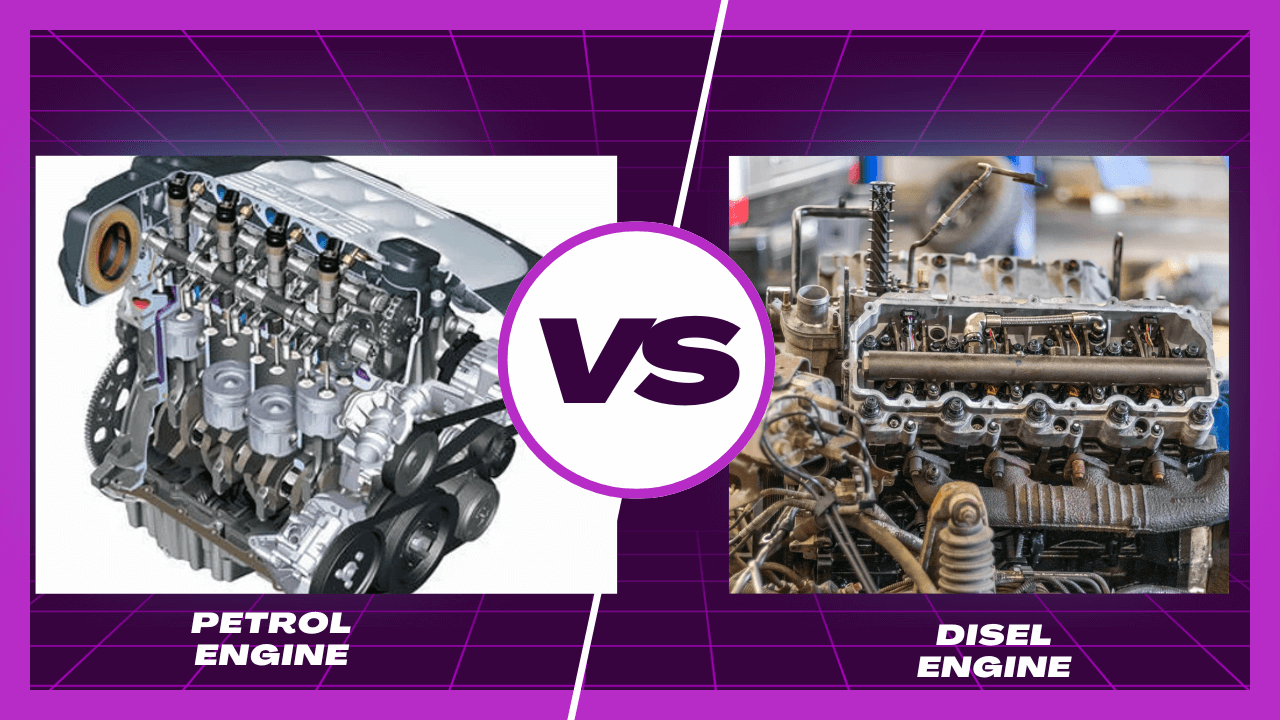| Cycle | Works on Otto cycle, where heat addition takes place at constant volume. | Works on Diesel cycle, where heat addition takes place at constant pressure. |
| Air-Fuel Mixture | A well-blended mixture of air and petrol (gasoline) is admitted into the engine cylinder. | Only air is admitted into the engine cylinder; diesel is sprayed later at the end of compression. |
| Compression Ratio | Designed for low compression ratios (5:1 to 9:1). | Designed for higher compression ratios (12:1 to 19:1). |
| Ignition | Ignited with the help of a spark plug operated electronically. | Ignites automatically due to the heat of high compression. |
| Efficiency | Otto cycle has higher efficiency than Diesel cycle, but due to low compression ratio, petrol engines have lower practical efficiency. | Diesel cycle has lower efficiency than Otto cycle, but due to higher compression ratio, diesel engines have higher practical efficiency. |
| Start | Easier to start (even in colder regions) due to lower compression ratio. | More difficult to start (especially in colder regions) due to higher compression ratios. |
| Speed | Better suited for higher speeds (3000-5000 RPM). | Doesn’t reach higher speeds (1000-2000 RPM). |
| Engine Weight | Light engines that can sustain lesser temperatures and pressures. | Heavy engines that can sustain high temperatures and pressures. |
| Power Generation | Cannot generate high power; best suited for lighter vehicles like personal cars and bikes. | Can generate high power; better suited for heavier vehicles like buses and trucks. |
| Cost | Cheaper but has higher operational cost. | Costlier but has lower operational cost. |

